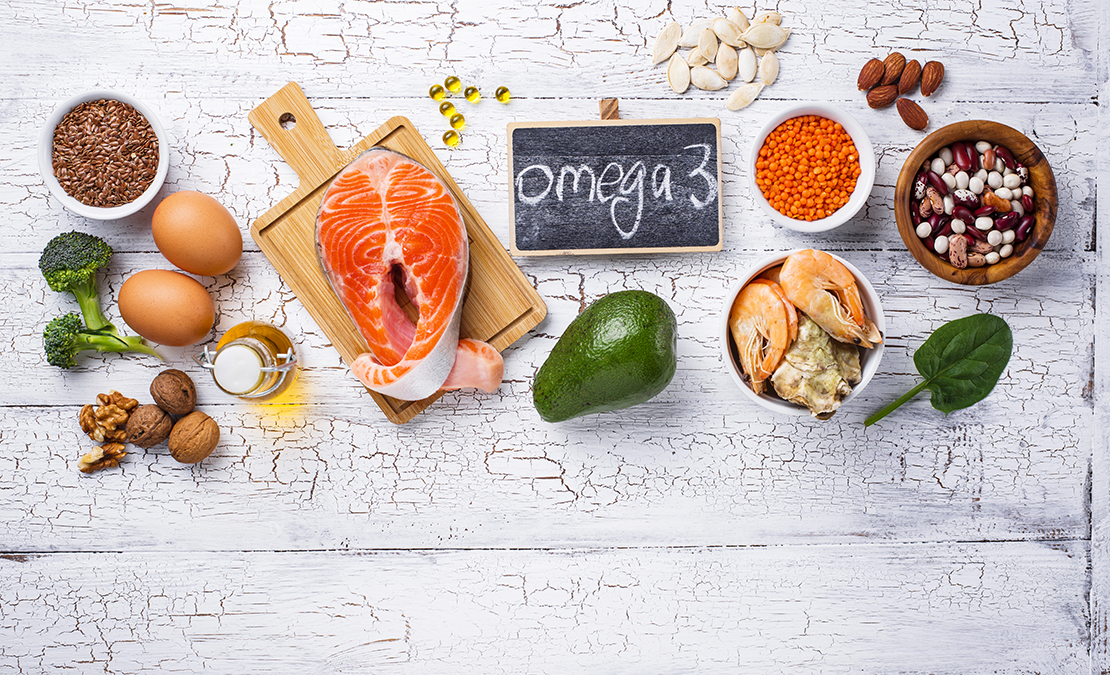 If you have been diagnosed with nonalcoholic fatty liver disease (NAFLD), chances are high you’ve been told to consume less fat.
If you have been diagnosed with nonalcoholic fatty liver disease (NAFLD), chances are high you’ve been told to consume less fat.
After all, a fatty liver contains too much fat. Makes sense, right?
Wrong! says a new study in EMBO Molecular Medicine. You need to consume more fat, but it must be a specific fat.
Researchers from Oregon State University carried out a review of the medical literature on NAFLD, finding that dietary omega-3 fatty acids could reduce the buildup of fat in the liver and subsequent scarring and destruction of this important organ.
They wanted to know how exactly omega-3 fat could do this. To find out, they conducted a multi-omic network analysis.
This is a comprehensive approach where scientists study how different biological components (like genes, proteins, and metabolites) interact with each other in a complex biological network like the human body. By looking at these interactions, researchers can get a more complete picture of how biological processes work, and, in this case, how diseases like NAFLD develop and progress.
Omega-3 fatty acids are fats that our bodies cannot make, but that are really important for many bodily functions like brain and heart health.
The team’s multi-omic network analysis revealed the main molecular factor responsible for the positive influence of omega-3 fatty acids on NAFLD. It is called betacellulin, a protein growth factor responsible for the conversion of fat in the liver to tissue scarring and the eventual destruction of liver tissue.
The researchers noticed that omega-3 could suppress betacellulin, and could thereby prevent the process that leads to permanent liver damage.
The form of omega-3 that worked the best was Docosahexaenoic acid or DHA. The best sources of DHA are salmon, mackerel, herring, and sardines, but it is also present in smaller amounts in oysters, shrimp, and anchovies.
In addition to fish, DHA for vegetarians and vegans is present in algae and algae oil, and in foods that are specifically fortified with it.

 Overcoming IBD
Overcoming IBD Multiple Sclerosis
Multiple Sclerosis Banishing Bronchitis
Banishing Bronchitis Gum Disease Gone
Gum Disease Gone Overcoming Onychomycosis
Overcoming Onychomycosis Neuropathy No More
Neuropathy No More The Prostate Protocol
The Prostate Protocol Brain Booster
Brain Booster
 Ironbound
Ironbound
 Solution for Shingles
Solution for Shingles
 The Bone Density Solution
The Bone Density Solution
 The Ultimate Healing Protocol
The Ultimate Healing Protocol
 The Parkinson's Protocol
The Parkinson's Protocol
 The Chronic Kidney Disease Solution
The Chronic Kidney Disease Solution
 Overthrowing Anxiety
Overthrowing Anxiety The Fatty Liver Solution
The Fatty Liver Solution The Hypothyroidism Solution
The Hypothyroidism Solution
 The End of Gout
The End of Gout The Blood Pressure Program
The Blood Pressure Program
 The Oxigized Cholesterol Strategy
The Oxigized Cholesterol Strategy
 Stop Snoring And Sleep Apnea Program
Stop Snoring And Sleep Apnea Program
 The Arthritis Strategy
The Arthritis Strategy The Vertigo & Dizziness Program
The Vertigo & Dizziness Program The 3-Step Diabetes Strategy
The 3-Step Diabetes Strategy Hemorrhoids Healing Protocol
Hemorrhoids Healing Protocol The Erectile Dysfunction Master
The Erectile Dysfunction Master Weight Loss Breeze
Weight Loss Breeze The IBS Program
The IBS Program The Insomnia Program
The Insomnia Program The Migraine and Headache Program
The Migraine and Headache Program The Neck Pain Solution
The Neck Pain Solution The Menopause Solution
The Menopause Solution The Ejaculation Master
The Ejaculation Master The TMJ Solution
The TMJ Solution The Acid Reflux Solution
The Acid Reflux Solution The Fibromyalgia Solution
The Fibromyalgia Solution The Psoriasis Strategy
The Psoriasis Strategy